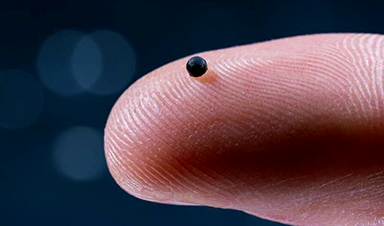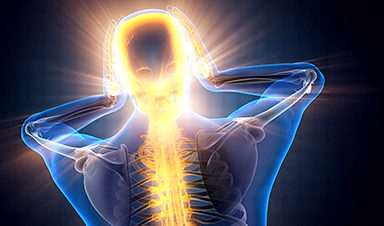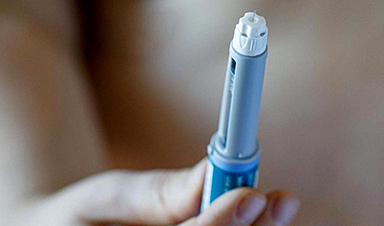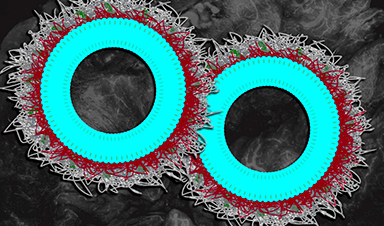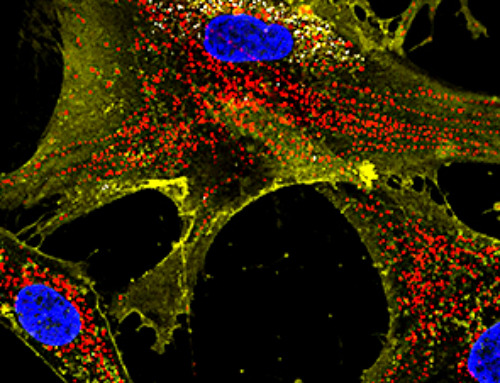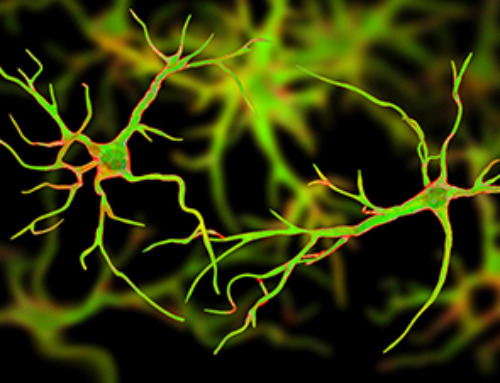Faculty members at the UM School of Medicine have created a cutting-edge tool that enables the early identification and assessment of risks in vulnerable patients.
Heart disease, being the leading cause of death globally, has prompted scientists to investigate the compounded effects of multiple risk factors such as hypertension, obesity, and high cholesterol on an individual's likelihood of suffering from a heart attack or stroke. Utilizing advanced modeling techniques, researchers from the University of Maryland School of Medicine (UMSOM) have created a novel tool capable of predicting heart disease risk in individuals aged over 40 based on their lifelong exposure to these risk factors.
Their groundbreaking research, recently published in the Journal of the American College of Cardiology, leveraged data from the Coronary Artery Risk Development in Young Adults (CARDIA) study. CARDIA, which tracked nearly 5,000 healthy young adults from four cities in the US for three decades, provided the researchers with data that allowed them to calculate the combined effects of individual risk factors like hypertension, diabetes, and high cholesterol. Moreover, they were able to measure the additive impact of multiple risk factors leading to cardiovascular disease.
"These data make clear the importance of instituting risk-factor reduction strategies as early in life as is feasible to reduce time-related cumulative exposure to harmful risks," said study lead author Michael J. Domanski, MD, Professor of Medicine, at UMSOM. "These results suggest that a self-declared Black racial status is a marker of underlying and unexplained differences in risk-factor impact."
The results of this study could help guide physicians in developing personalized prevention strategies for individual patients. Public health policymakers also could use the new risk calculation tool to assess the likely impact of proposed heart disease prevention programs, while researchers could use it to help design clinical trials to test heart disease prevention strategies.
"By examining the long-term impact of multiple risk factors on cardiovascular disease, our study highlights the importance of cumulative exposure in determining an individual's risk," said Xin Tian, Ph.D., Adjunct Professor at UMSOM, and a biostatistician at the National Heart, Lung, and Blood Institute (NHLBI), part of the National Institutes of Health (NIH). "Our findings underscore the need for personalized prevention strategies that address both the time course and severity of these risk factors. As scientists, our duty is to use this knowledge to inform the development of effective prevention and intervention strategies that can reduce the burden of cardiovascular disease on individuals and society as a whole."
The R Shiny app, developed in this study, is a tool that allows medical providers to insert cardiovascular risks, patient history, and patient race to determine individual risks and how best to address them. Electronic medical records are now widely available, making the development of tools such as the R Shiny app possible. R Shiny can be used to estimate cardiovascular risks after age 40 based on the severity of risk factors earlier in adulthood. The app is hosted on NHLBI's website.
"Our study demonstrates the power of innovative statistical data-science approaches in enabling biomedical researchers to gain deeper insights into complex health issues, such as cardiovascular disease. We were able to develop risk prediction models that provide a more accurate and personalized assessment of an individual's risk," said Colin Wu, Ph.D., Adjunct Professor of Medicine at UMSOM and a mathematical statistician at NHLBI, part of NIH.
During the two-decade follow-up period after age 40, the researchers found that 316 people in the study experienced their first cardiovascular event, including heart disease, strokes, and congestive heart failure.
"This new tool could be used by cardiologists to convince patients to take the necessary steps to lower their risk of heart attack or stroke by quantifying how much their risk would improve if they better managed, for example, their cholesterol and hypertension," said Mark Gladwin, MD, Dean, University of Maryland School of Medicine, Vice President for Medical Affairs, University of Maryland, Baltimore, and the John Z. and Akiko K. Bowers Distinguished Professor. "That could have a significant impact, particularly in vulnerable populations who have not been aggressively treated for cardiovascular risks in the past due to long-standing health inequities."
News
Multifunctional Nanogels: A Breakthrough in Antibacterial Strategies
Antibiotic resistance is a growing concern - from human health to crop survival. A new study successfully uses nanogels to target and almost entirely inhibit the bacteria P. Aeruginosa. Recently published in Angewandte Chemie, the study [...]
Nanoflowers rejuvenate old and damaged human cells by replacing their mitochondria
Biomedical researchers at Texas A&M University may have discovered a way to stop or even reverse the decline of cellular energy production—a finding that could have revolutionary effects across medicine. Dr. Akhilesh K. Gaharwar [...]
The Stunning New Push to Protect the Invisible 99% of Life
Scientists worldwide have joined forces to build the first-ever roadmap for conserving Earth’s vast invisible majority—microbes. Their new IUCN Specialist Group reframes conservation by elevating microbial life to the same urgency as plants and [...]
Scientists Find a Way to Help the Brain Clear Alzheimer’s Plaques Naturally
Scientists have discovered that the brain may have a built-in way to fight Alzheimer’s. By activating a protein called Sox9, researchers were able to switch on star-shaped brain cells known as astrocytes and turn them into [...]
Vision can be rebooted in adults with amblyopia, study suggests
Temporarily anesthetizing the retina briefly reverts the activity of the visual system to that observed in early development and enables growth of responses to the amblyopic eye, new research shows. In the common vision [...]
Ultrasound-activated Nanoparticles Kill Liver Cancer and Activate Immune System
A new ultrasound-guided nanotherapy wipes out liver tumors while training the immune system to keep them from coming back. The study, published in Nano Today, introduces a biodegradable nanoparticle system that combines sonodynamic therapy and cell [...]
Magnetic nanoparticles that successfully navigate complex blood vessels may be ready for clinical trials
Every year, 12 million people worldwide suffer a stroke; many die or are permanently impaired. Currently, drugs are administered to dissolve the thrombus that blocks the blood vessel. These drugs spread throughout the entire [...]
Reviving Exhausted T Cells Sparks Powerful Cancer Tumor Elimination
Scientists have discovered how tumors secretly drain the energy from T cells—the immune system’s main cancer fighters—and how blocking that process can bring them back to life. The team found that cancer cells use [...]
Very low LDL-cholesterol correlates to fewer heart problems after stroke
Brigham and Women's Hospital's TIMI Study Group reports that in patients with prior ischemic stroke, very low achieved LDL-cholesterol correlated with fewer major adverse cardiovascular events and fewer recurrent strokes, without an apparent increase [...]
“Great Unified Microscope” Reveals Hidden Micro and Nano Worlds Inside Living Cells
University of Tokyo researchers have created a powerful new microscope that captures both forward- and back-scattered light at once, letting scientists see everything from large cell structures to tiny nanoscale particles in a single shot. Researchers [...]
Breakthrough Alzheimer’s Drug Has a Hidden Problem
Researchers in Japan found that although the Alzheimer’s drug lecanemab successfully removes amyloid plaques from the brain, it does not restore the brain’s waste-clearing system within the first few months of treatment. The study suggests that [...]
Concerning New Research Reveals Colon Cancer Is Skyrocketing in Adults Under 50
Colorectal cancer is striking younger adults at alarming rates, driven by lifestyle and genetic factors. Colorectal cancer (CRC) develops when abnormal cells grow uncontrollably in the colon or rectum, forming tumors that can eventually [...]
Scientists Discover a Natural, Non-Addictive Way To Block Pain That Could Replace Opioids
Scientists have discovered that the body can naturally dull pain through its own localized “benzodiazepine-like” peptides. A groundbreaking study led by a University of Leeds scientist has unveiled new insights into how the body manages pain, [...]
GLP-1 Drugs Like Ozempic Work, but New Research Reveals a Major Catch
Three new Cochrane reviews find evidence that GLP-1 drugs lead to clinically meaningful weight loss, though industry-funded studies raise concerns. Three new reviews from Cochrane have found that GLP-1 medications can lead to significant [...]
How a Palm-Sized Laser Could Change Medicine and Manufacturing
Researchers have developed an innovative and versatile system designed for a new generation of short-pulse lasers. Lasers that produce extremely short bursts of light are known for their remarkable precision, making them indispensable tools [...]
New nanoparticles stimulate the immune system to attack ovarian tumors
Cancer immunotherapy, which uses drugs that stimulate the body’s immune cells to attack tumors, is a promising approach to treating many types of cancer. However, it doesn’t work well for some tumors, including ovarian [...]







